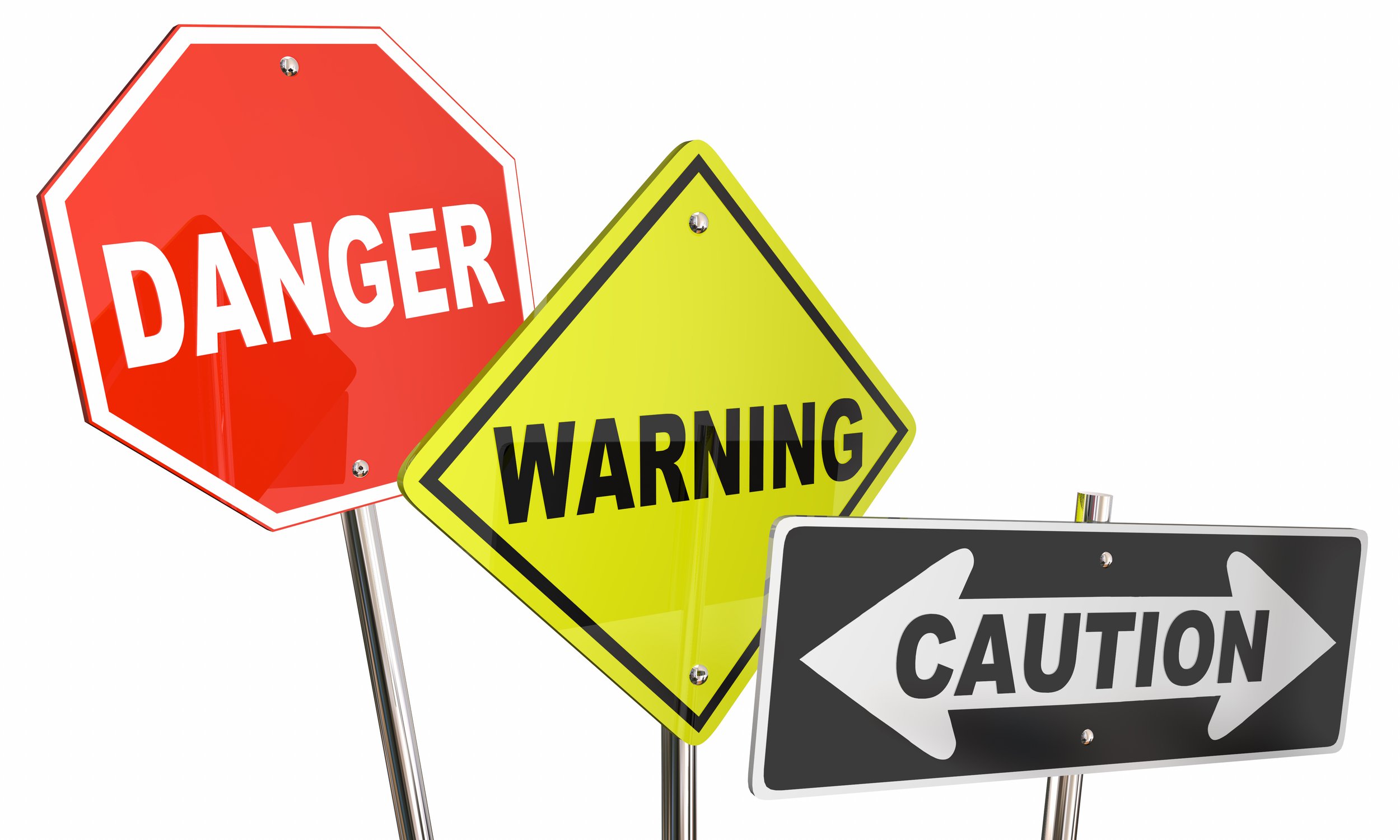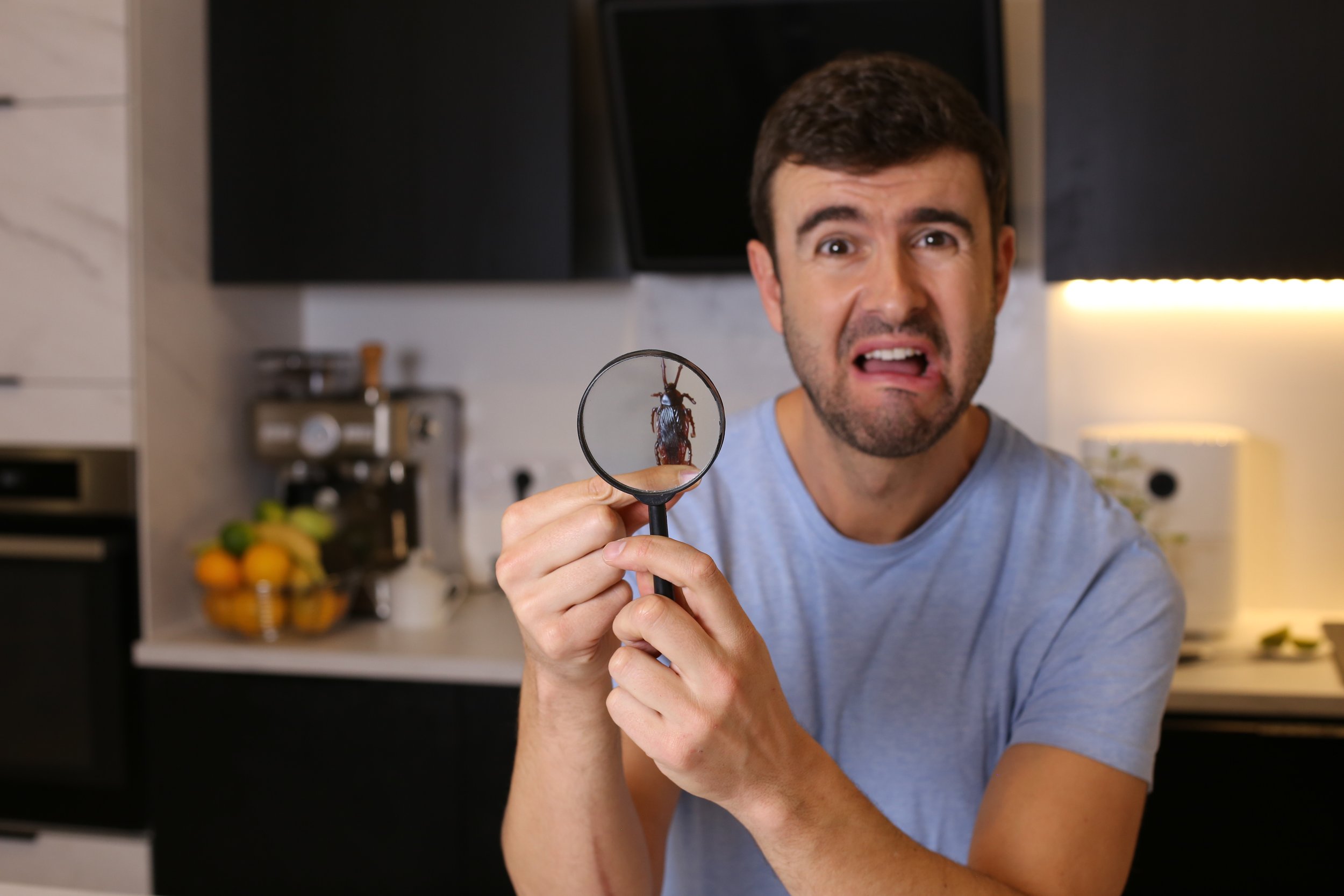How Long Should I Wait to Enter My House After Pest Control?

JONATHAN GIORGI
Pest Control Specialist | Lic. #13597
Published on April 14, 2024
When controlling pests, the use of pesticides is often essential. These chemical compounds, designed to kill or repel insects and rodents, can also be hazardous to humans and pets.
A frequently asked question when applying pesticides is, "How long should I wait before it's safe to re-enter my house after a pest control treatment?" The answer varies based on several factors, including the target pest, the pesticides used, the treatment area, and conditions such as ventilation and weather.
The re-entry time is the minimum period you should wait before entering an area treated with pesticides without needing to wear protective clothing or gear. Knowing this timeframe is helpful for planning your treatment strategy and understanding the necessary safety precautions to take.
When determining how long to wait before re-entering your home after a pesticide treatment, consider these 10 factors:
10 Factors to Consider
1. Pesticide Properties
The first factor to consider is the pesticide's properties. Each pesticide varies in toxicity level, hazard level, and route of exposure. Understanding these characteristics informs you about the necessary personal protective equipment (PPE) to wear during application and how long to avoid the treated area afterward.
The toxicity level refers to how harmful or dangerous a pesticide is. Highly toxic pesticides, such as Vikane gas used for termite fumigation, can be lethal within hours at high concentrations. Re-entry times vary based on the house's size, the concentration used, and ventilation; they can range from a few hours to several days. In contrast, less toxic pesticides, like Tempo SC Ultra, an insecticide for interior and exterior use, may only cause skin, eye, or lung irritation upon exposure. For these types of pesticides, it's advised to stay away from treated areas until they have completely dried, which typically takes 1 hour outdoors and 4 hours indoors.
The hazard level indicates the potential risk of exposure to a pesticide. Liquid baits such as Advion Ant Gel have an extremely low hazard level since they must be ingested to cause harm, thus requiring no re-entry time after application. Conversely, aerosols such as PT Alpine Flea & Bed Bug Insecticide present a higher hazard due to the potential for inhalation. In these cases, it is recommended to wait 4 hours before re-entering your home. Generally, pesticides with higher hazards require longer waiting periods than those with lower hazards.
The route of exposure describes how a pesticide enters the body. There are four main routes: inhalation, ingestion, dermal contact, and ocular exposure. This factor influences the re-entry time, as pesticides that enter the body through the lungs, eyes, or skin generally require longer re-entry times.
Pro Tip: To gauge a pesticide's toxicity level, check its label for a signal word. 'Danger' denotes high toxicity, 'Warning' signifies moderate toxicity, and 'Caution' indicates low toxicity.
2. Pesticide Formulation
Pesticide formulation refers to the combination of the active ingredient (AI) and inert ingredients that compose a pesticide. This combination determines the physical form of the pesticide product.
There are various types, such as Wettable Powders (WP), Soluble Powders (SP), Emulsifiable Concentrates (EC), Suspension Concentrates (SC), Granules (G), Microgranules (MG), Dusts (D), Aerosols (A), Baits (B), Fumigants (F), Oil-based Formulations (O), Water Dispersible Granules (WDG), Ultra-Low Volume (ULV) Concentrates, Capsule Suspensions (CS), and Seed Coatings.
Dusts, aerosols, baits, and granules are typically applied in their original form. However, the application method for pesticide concentrates varies depending on the target pest and treatment area. For instance, you can mix a concentrate with water for spraying, or use it with specialized pest control equipment for misting or fogging.
The choice of pesticide formulation is crucial to factor in when considering your re-entry time. While different formulations can effectively eliminate the same problem, some require longer re-entry times than others. For example, spraying for ants typically offers faster results but requires staying away from the treated areas for a few hours. Conversely, baiting for ants might take longer to eliminate the infestation, but it allows you to remain in your home without needing to avoid these areas.
Understanding the relationship between a pesticide's formulation and its impact on re-entry time is essential for safe and effective pest control.
3. Application Method
The application method describes the various techniques and processes used to deliver pesticides to their intended target areas or pests. There are six main types of application methods used to treat pests:
Spot Treatment: This method involves applying pesticide directly to localized areas where pests are evident or likely to be present. It's typically used for small infestations and is effective in targeting specific spots without treating large areas, making it a practical choice for indoor use.
Baiting: Baits are often used against rodents and insects like ants and cockroaches. The bait contains a pesticide mixed with food attractants. Once pests consume the bait, they carry the poison back to their nest, which helps in controlling the entire population.
Space Treatment: This method involves dispersing a pesticide throughout an entire room or enclosed space in the form of a fog or mist. Space treatments are effective in treating flying insects, such as mosquitoes, or for reaching pests hidden in hard-to-reach areas. Foggers and bug bombs are examples of products for space treatments. This method is generally used when pests are widespread within an enclosed area and where other methods might not be as effective.
Crack & Crevice Treatment: This is a precise application method where small amounts of pesticide are applied into cracks and crevices in which pests hide or enter buildings. This method is particularly effective for controlling pests like cockroaches, ants, and spiders in kitchens, bathrooms, and other infested areas.
Barrier Treatment: This method involves applying pesticides around the perimeter of a home or across potential entry points to prevent pests from entering. It’s commonly used against pests like ants, termites, and various outdoor insects.
Broadcast Treatment: This involves applying pesticides over a large area and is often used for lawn and garden pest control. Homeowners might use granules, sprays, or powders to cover the entire area where pests are a problem, such as for controlling grubs or other lawn pests.
Different application methods treat areas of various sizes, which affect re-entry times. For instance, space, crack and crevice, barrier, and broadcast treatments often require extended re-entry times due to their broad coverage, compared to spot treatments or baiting, which are more localized and therefore require shorter re-entry times.
Pro Tip: Identify where the target pest is hiding or nesting before applying pesticides. This knowledge will help you choose the most effective application method.
4. Ventilation
Ventilation plays a key role in influencing pesticide re-entry times. The better the ventilation, the shorter the re-entry time. Effective ventilation can be achieved through the use of fans, open windows, or doors, allowing air to circulate and help clear out pesticides from a room, especially after fogging or fumigation. It can also aid in making sprayed pesticides dry faster.
It's crucial to keep doors closed or the area blocked off after applying pesticides to prevent unintended exposure and poisoning. This measure ensures safety by limiting access to the treated area until the pesticide has dissipated or dried.
Pro Tip: After treating a room inside your house, use a fan or open windows for ventilation, but keep the door closed to prevent entry. For treatments in the garage, opening the garage door can expedite the drying process and assist in clearing the air of pesticides.
5. Weather Conditions
Weather plays a major role in pest control. Certain weather conditions are more conducive to applying pesticides than others.
Ideal weather conditions for pest control include bright, sunny, dry, and wind-free days. Such conditions help pesticides dry faster, allowing for quicker re-entry.
Suboptimal weather conditions, such as rainy, cold, windy, or humid days, are not ideal for pest control. They can wash pesticides away or slow down the drying process, thus potentially rendering them ineffective or extending the time before re-entry is safe.
Pro Tip: Aim to apply pesticides on a bright, sunny, dry, wind-free day. This enhances the effectiveness of the pesticide by allowing it to adhere better to the treated surface and significantly reduces the wait time before re-entering the area.
6. Treatment Area
The treatment area refers to the location where the pesticide will be applied. Will it be indoors, outdoors, or both? If indoors, determine which specific rooms will be treated, such as the kitchen, bathroom, bedroom, garage, or the entire house.
A common misconception is that applying pesticides indoors requires leaving the house. While this might be true in some cases, depending on the application method, you generally only need to wait until the pesticide has dried or the area has sufficiently aired out. For instance, if treating the bathroom with pesticides, you only need to avoid the bathroom until the pesticides are dry or aired out, not vacate the entire house.
Pro Tip: Once you know the treatment area, choose a time of day to apply the pesticides when the fewest people are in the house.
7. Sensitivity Level
The next important factor to consider is your sensitivity level to pesticides. Infants, pregnant women, elderly individuals, people with respiratory conditions, and those with compromised immune systems should avoid areas treated with pesticides for extended periods. This precaution is necessary due to the heightened risk pesticides pose to their health.
Pesticides are toxic chemicals that can adversely affect health if one is exposed to a significant dose. Generally, healthy individuals require a much higher dose to experience harmful, long-lasting effects compared to those with compromised health.
Pro Tip: If you belong to a compromised category, consider using Integrated Pest Management (IPM) strategies combined with natural solutions before resorting to chemical pesticides.
8. Infestation Scale and Severity
Understanding the type of pest you're dealing with and the severity of the infestation will influence your choice of pesticides and, therefore, affect the re-entry time.
Small infestations generally require less toxic pesticides applied in fewer areas, while larger infestations often need more toxic pesticides in a greater number of locations. For example, treating a severe flea infestation involves treating every room in your home with a combination of an insect growth regulator (IGR) and a pyrethroid insecticide, typically requiring you to vacate the home for 4 hours afterward. In contrast, a minor flea infestation may only need treatment in the affected rooms with a botanical solution containing peppermint and clove oil, allowing you to stay in your home after the treatment.
It's important to note that different pests require specific pesticides. For instance, the pesticides used for bed bugs differ from those for ants. Some pests may require more toxic pesticides for effective elimination due to their resilience or the nature of their infestation. Identifying your pest problem and the infestation level will guide your choice of which pesticides to use, where to apply them, and how long to avoid treated areas afterward.
9. Pets
We all love our pets and want to protect them from harm. Since pets are unaware of the dangers of pesticides, it's crucial to keep them away from treated areas until they are completely safe.
Humans can re-enter treated areas sooner than pets due to protective clothing and gear, such as pants, shoes, gloves, masks, and safety glasses. However, pets are more susceptible to pesticides because they lack protective equipment.
Ensure that a treated area is completely safe before allowing your pets to re-enter, both indoors and outdoors. As a general rule of thumb, add an extra hour to the pesticide's re-entry time before permitting pets access.
Pro Tip: For indoor pesticide applications involving spraying, set a four-hour timer after applying. Once the timer expires, test the area with a paper towel. If it absorbs any liquid, keep your pets out until the area is completely dry.
10. Odor
Strong odors from pesticides can be nauseating. If you are sensitive to smells, consider the type of pesticide you use, as this can influence your re-entry time.
Most chemical pesticides are odorless, while botanical pesticides often have a strong smell. For example, Essentria IC-Pro, a professional-grade botanical pesticide, uses essential oils in concentrations high enough to kill and repel pests. It's safe to be around immediately after application, but it has an overpowering smell that can linger for hours. This smell may cause nausea in some people, while others might not be bothered by it.
Consider your odor sensitivity when selecting a pesticide, as this will determine how long you might prefer to stay away from the treated area.
General Re-Entry Time Guidelines
This section provides general guidelines on how long you should wait before it’s safe to re-enter an area treated with pesticides, considering both the location and the specific type of pesticide used. Remember, these are general guidelines, and the re-entry time can vary for each pesticide. Always refer to the pesticide label for the recommended personal protective equipment (PPE) to wear during application and the specific re-entry time afterward.
By Location
Indoor Treatment: 3 – 4 hours.
Outdoor Treatment: 1 – 2 hours.
By Pesticide Types
Repellents: No re-entry time required.
Ingested Pesticides (rodenticides and insect baits): No re-entry time required.
Contact Pesticides (sprays, aerosols, mists, and fogs): 1 to 4 hours.
Desiccants (dusts and powders): 1 to 4 hours.
Herbicides: 2 hours to 1 day.
Fungicides: 2 hours to 1 day.
Systemic Pesticides: 2 hours to 2 days.
Fumigants (vapors and gases): 12 hours to 3 days.
Summary
The re-entry time after pest control varies based on several factors, including the type of pesticide used, application method, treatment area, environmental conditions, and ventilation. General guidelines recommend waiting 3-4 hours for indoor treatments and 1-2 hours for outdoor treatments. This period allows pesticides to fully dry or dissipate, making the area safe for humans and pets.
Always refer to the pesticide label for specific instructions regarding the personal protective equipment (PPE) to wear during application and the specific re-entry time afterward. Following these guidelines ensures effective pest control while maintaining safety.
Now It's Your Turn
When choosing pesticides to eliminate an infestation, it's important to consider several factors: the pesticide's risk profile and formulation, the application method, and the treatment area. Each of these elements plays a key role in determining the safety, effectiveness, and re-entry time of your pest control treatment.
Always read the pesticide label before purchasing the product to learn about the necessary personal protective equipment (PPE) to wear during application and how long to wait before re-entering the treated area afterward.
If you're looking for help navigating this complex process, discover the simplest and most effective methods to eliminate ants, spiders, and rodents with our easy-to-follow DIY guides. Learn exactly which pesticides to use, where and how to apply them safely, and how long to avoid treated areas afterward. Begin your journey to a pest-free home today and enjoy the peace of mind that comes with expert guidance!
Author Bio: Jonathan Giorgi
Jonathan Giorgi is the founder of Pest Ninja. He is a second-generation pest control specialist with a Branch 2 pest control operator's license (#OPR13597) and more than a decade of experience. Jonathan's mission is to empower individuals to tackle pest problems themselves, equipping them with effective DIY solutions and safe, professional-grade products. Outside of work, he enjoys spending quality time with his wife, Cynthia, and their dog, Peanut, as well as reading, playing chess, staying fit, and watching entertaining TV series and movies.














